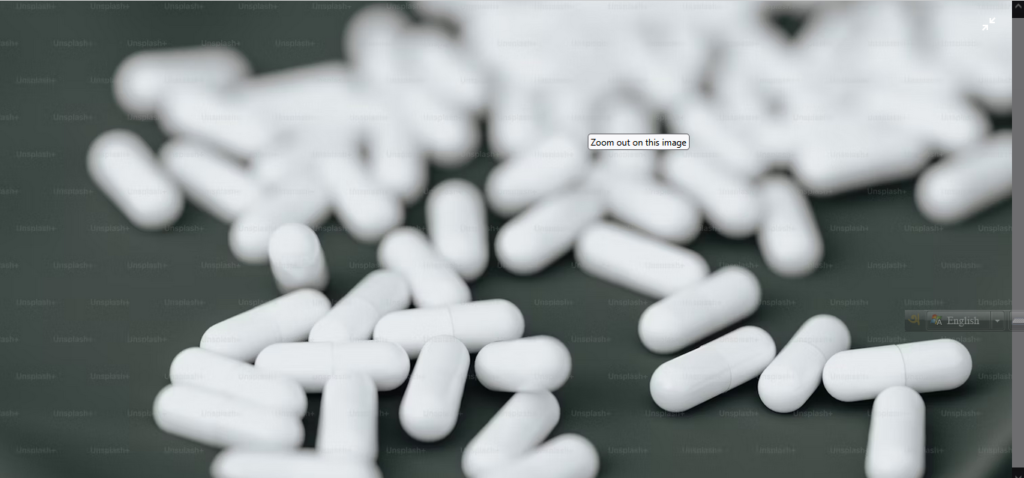Introduction
Medicine is one of the oldest and most respected professions in human history. From ancient healers using herbal remedies to modern surgeons performing robotic-assisted procedures, the core purpose of has always been to alleviate suffering, prevent disease, and prolong life. At the heart of this discipline stands the doctor—a figure embodying compassion, knowledge, responsibility, and trust.
The practice of has evolved tremendously over the centuries. While once limited by rudimentary tools and a limited understanding of human physiology, today’s doctors are equipped with cutting-edge technology, advanced pharmaceuticals, and a comprehensive understanding of disease. However, despite these advancements, the essential role of a doctor remains the same: to care for the patient as a whole, not just as a set of symptoms.
In this essay, we will explore the field of , the historical and modern role of doctors, the ethical and emotional challenges they face, and the evolving expectations of the medical profession in the 21st century.
1. The Historical Evolution of Medicine

Medicine has roots dating back to the earliest civilizations. The Ancient Egyptians, Greeks, and Chinese each developed systems of e that laid the groundwork for future generations.
- Ancient Practices: The Egyptians practiced surgery and had an understanding of anatomy based on mummification. In India, the Ayurveda system emphasized balance in bodily systems using diet and herbal treatment. Chinese medicine incorporated acupuncture, herbal remedies, and the concept of “Qi” or life force.
- Greek Influence: Hippocrates, often called the “Father of Medicine,” introduced the idea that diseases were caused by natural rather than supernatural forces. His Hippocratic Oath remains a symbolic cornerstone of medical ethics.
- Islamic Golden Age: Physicians like Avicenna (Ibn Sina) compiled vast medical knowledge in texts such as “The Canon of Medicine,” which influenced both Islamic and European medicine.
- Modern Transformation: The Renaissance and Enlightenment eras brought about scientific approaches to medicine. With the discovery of the circulatory system, germ theory, anesthesia, and antibiotics, medicine entered a new age.
2. What It Means to Be a Doctor

Being a doctor means more than simply diagnosing and treating disease. It requires a combination of scientific acumen, emotional intelligence, ethics, and interpersonal skills.
- Knowledge and Expertise: Doctors undergo rigorous training in anatomy, physiology, pathology, pharmacology, and clinical practice. The ability to interpret complex data, make decisions under pressure, and stay updated with ever-evolving medical knowledge is crucial.
- Empathy and Communication: Good doctors listen. A large part of medicine involves understanding the patient’s concerns, fears, and values. Communication builds trust and improves outcomes.
- Ethics and Responsibility: The medical profession is governed by strict ethical principles. Confidentiality, informed consent, and non-maleficence (“do no harm”) are fundamental. Doctors must balance respect for autonomy with the need to act in the patient’s best interest.
- Adaptability: With the rise of artificial intelligence, telemedicine, and global pandemics like COVID-19, doctors must continually adapt to new tools, environments, and challenges.
3. The Doctor-Patient Relationship
The relationship between doctor and patient is central to effective care. Trust is its foundation.
- Confidentiality: Patients must feel safe disclosing personal health information. Doctors are legally and morally obligated to protect this information.
- Informed Consent: Patients must understand the risks and benefits of a treatment before agreeing to it. Doctors have a duty to explain options clearly and without coercion.
- Shared Decision Making: Modern medicine increasingly encourages collaboration between doctor and patient. This approach respects the patient’s values and leads to more satisfactory health outcomes.
4. Specializations and Diverse Roles
Medicine is a vast field, and doctors may choose from a range of specialties depending on their interests and aptitudes.
- Primary Care: General practitioners (GPs) are often the first point of contact for patients. They provide holistic care and coordinate with specialists.
- Surgeons: Surgeons perform life-saving operations, from appendectomies to open-heart surgery. It is a field requiring precision and confidence.
- Pediatricians: These doctors care for children and are trained to recognize developmental and behavioral issues as well as physical illness.
- Psychiatrists: Addressing mental health is as crucial as physical health. Psychiatrists diagnose and treat disorders such as depression, anxiety, and schizophrenia.
- Emergency Medicine: Working in high-pressure environments, ER doctors make quick decisions to stabilize patients.
- Public Health and Research: Some doctors work behind the scenes, influencing health policy, conducting clinical research, and tracking disease outbreaks.
5. Challenges and Pressures of Being a Doctor
Despite its rewards, medicine is a demanding career.
- Emotional Burden: Witnessing suffering and death regularly can lead to burnout, compassion fatigue, or depression. Supporting doctors’ mental health is vital.
- Long Hours: Many doctors work long and irregular hours, particularly during residency and in emergency settings.
- Legal Risks: Doctors face the constant risk of malpractice lawsuits, which can affect their reputation and career.
- Ethical Dilemmas: Deciding whether to withdraw life support, handle unvaccinated patients, or distribute limited resources during a crisis all pose moral challenges.
6. Technological Advancement and the Future of Medicine
Technology is transforming medicine at an unprecedented pace.
- Telemedicine: Virtual consultations make healthcare more accessible, especially in rural or underserved areas.
- Artificial Intelligence: AI assists in diagnosis, imaging, and predicting disease outbreaks. However, it cannot replace the human touch and clinical judgment.
- Genetic Medicine: Personalized treatment plans based on an individual’s genetic makeup are becoming a reality.
- Medical Robotics: Robotic systems allow for minimally invasive surgeries, leading to faster recovery times and fewer complications.
The doctor of the future must not only master these tools but also retain the humanity that defines the profession.
7. Medicine During Global Crises
The COVID-19 pandemic underscored the indispensable role of doctors. They worked on the frontlines, often without adequate protection, putting their own lives at risk.
- Heroism and Sacrifice: Many doctors contracted the virus and some died. Their courage highlighted the nobility of the profession.
- Public Health Education: Doctors played a key role in educating the public, countering misinformation, and encouraging vaccination.
- Mental Health Struggles: The pandemic increased the psychological burden on healthcare workers, reinforcing the need for institutional support.
8. Medicine as a Vocation, Not Just a Job
For many, medicine is a calling. The decision to become a doctor often stems from a deep desire to help others.
- Personal Fulfillment: Saving lives, relieving pain, and improving quality of life provide immense satisfaction.
- Lifelong Learning: Medicine requires continual education. This intellectual stimulation keeps the career engaging.
- Community Respect: Doctors are often held in high regard. Their opinions are valued, and their presence can elevate the standard of care in any society.
9. The Ethics of Global Medicine

In an increasingly interconnected world, medical ethics must consider global health disparities.
- Medical Tourism: Wealthier patients traveling to less developed countries for cheaper treatment raises questions of equity.
- Brain Drain: Doctors from poorer countries often emigrate for better pay, leaving their home nations with critical shortages.
- Global Solidarity: Programs like Doctors Without Borders and WHO missions highlight the importance of international cooperation in healthcare.
10. Becoming a Doctor: The Journey
Becoming a doctor is a long and challenging path.
- Education: It typically involves years of undergraduate study, followed by medical school, residency, and sometimes fellowships.
- Training: Clinical rotations expose students to different specialties and real-world patient interactions.
- Licensing: Rigorous exams and continuing education are required to practice legally and safely.
- Personal Growth: The journey is not just academic—it demands maturity, resilience, and empathy.
science
In an age of technological miracles and unprecedented health challenges, the importance of compassionate, skilled, and ethical doctors cannot be overstated. As society evolves, so too must the profession of medicine—without losing sight of the timeless values that make it one of humanity’s most noble callings.
medicine
Medicine is the science and practice of diagnosing, treating, and preventing illness, disease, and injury. It is one of the most essential fields in human society, as it directly impacts the quality of life, longevity, and well-being of individuals and populations. From the earliest tribal healers to modern physicians using artificial intelligence, medicine has continuously evolved, shaped by scientific discoveries, cultural beliefs, and technological progress.
This essay delves into the concept of medicine, its history, branches, impact on society, ethical dimensions, and the future challenges and innovations facing this ever-important discipline.
1. What Is Medicine?
At its core, medicine is both a science and an art. The scientific aspect involves knowledge of anatomy, physiology, microbiology, pharmacology, and pathology, among others. The artistic aspect lies in the compassionate interaction between doctor and patient, requiring communication, empathy, and ethical sensitivity.
Medicine aims to:
- Prevent disease through vaccines, education, and public health measures.
- Diagnose diseases using physical exams, tests, and imaging.
- Treat conditions with medication, surgery, or other interventions.
- Improve quality of life for those with chronic or incurable illnesses.
2. A Brief History of Medicine
The journey of medicine spans thousands of years:
- Ancient Medicine: Early humans relied on shamans and herbal remedies. Ancient Egyptian papyri, Indian Ayurvedic texts, and Chinese medical scrolls reveal complex medical systems based on natural and spiritual beliefs.
- Greek and Roman Influence: Hippocrates introduced the idea that disease had natural causes and emphasized observation and ethics. Galen, a Roman physician, advanced surgical techniques and anatomical knowledge.
- Islamic Golden Age: Scholars like Avicenna and Al-Razi preserved and expanded medical knowledge, developing hospitals, surgical tools, and detailed medical texts.
- Renaissance and Enlightenment: Dissection, scientific methods, and innovations like the microscope revolutionized medicine. Edward Jenner’s smallpox vaccine in 1796 marked the birth of immunology.
- Modern Medicine: The 19th and 20th centuries brought antiseptics, anesthesia, antibiotics, and public health reforms. Today, medicine is driven by evidence, specialization, and high-tech tools.
3. Branches of Medicine
Medicine is a vast field with numerous specialties, each focusing on a specific aspect of health:
- Internal Medicine: Deals with adult diseases and general medical care.
- Pediatrics: Focuses on children’s health.
- Surgery: Involves operative techniques to treat conditions.
- Obstetrics and Gynecology: Covers childbirth and women’s reproductive health.
- Psychiatry: Deals with mental health and emotional disorders.
- Cardiology: Specializes in heart-related conditions.
- Oncology: Focuses on cancer diagnosis and treatment.
- Dermatology, Neurology, Urology, and many more specialties serve specific areas of the body or conditions.
Each specialty combines clinical knowledge with technological tools to address complex health issues.
4. Public Health and Preventive Medicine
Beyond individual treatment, medicine also plays a public health role, aiming to prevent illness and promote community well-being. This includes:
- Vaccination campaigns (e.g., polio, COVID-19).
- Health education (e.g., anti-smoking efforts).
- Sanitation and hygiene measures (e.g., clean water supply).
- Disease surveillance and epidemiology, which track and prevent outbreaks.
Public health medicine is especially vital in developing countries where infectious diseases and poor infrastructure pose significant threats.
5. The Role of Medical Professionals
Medicine is practiced by a team of professionals:
- Doctors: Lead diagnosis and treatment.
- Nurses: Provide care, education, and support.
- Pharmacists: Dispense medication and counsel patients.
- Technologists: Operate diagnostic equipment (like X-rays or MRIs).
- Therapists: Help patients recover physically and mentally.
All medical workers contribute to patient care, and teamwork is essential for effective treatment outcomes.
6. The Doctor-Patient Relationship
One of the most important aspects of medicine is the relationship between doctors and patients. It is built on:
- Trust: Patients must feel safe and respected.
- Communication: Clear explanations improve understanding and cooperation.
- Confidentiality: Patient privacy is protected by law and ethics.
- Empathy: Patients often face fear, pain, or uncertainty. Doctors must show compassion and understanding.
Good communication improves diagnosis, treatment compliance, and overall satisfaction.
7. Medical Ethics
Medicine involves life, death, and everything in between. Therefore, it must be guided by strong ethical principles:
- Beneficence: Acting in the patient’s best interest.
- Non-maleficence: “Do no harm.”
- Autonomy: Respecting patients’ rights to make decisions about their health.
- Justice: Fair access to treatment and resources.
Modern ethical dilemmas include:
- End-of-life care (e.g., euthanasia or life support withdrawal).
- Genetic editing and cloning.
- Allocation of limited resources (e.g., during pandemics).
- Medical experimentation and consent.
Ethics ensures that medicine remains humane, respectful, and equitable.
8. Challenges Facing Medicine Today
Despite great advances, the medical world faces many challenges:
a. Global Health Inequality
Access to quality healthcare is uneven. In many low-income countries, people lack basic services, leading to high infant mortality and preventable deaths.
b. Chronic Diseases
Modern lifestyles have led to increased heart disease, diabetes, and obesity. These conditions require long-term care and prevention strategies.
c. Mental Health Crisis
Depression, anxiety, and suicide are on the rise globally. Mental health services are often underfunded and stigmatized.
d. Medical Costs
Healthcare is extremely expensive in many countries. Insurance, medication prices, and hospital bills can be unaffordable for many families.
e. Antimicrobial Resistance
Overuse of antibiotics has led to resistant bacteria, making common infections harder to treat.
9. Innovations and the Future of Medicine
Medicine continues to evolve rapidly thanks to scientific and technological progress.
a. Artificial Intelligence
AI can analyze medical images, predict outcomes, and support diagnosis. It saves time and improves accuracy.
b. Telemedicine
Virtual consultations have become common, especially after COVID-19. This expands access to healthcare, especially in remote areas.
c. Genomics
DNA analysis allows for personalized medicine, where treatments are tailored to individual genetic profiles.
d. Robotics
Robot-assisted surgeries increase precision and reduce recovery time.
e. 3D Printing
Organs, bones, and prosthetics can now be 3D printed for custom medical solutions.
f. mRNA Vaccines
Technology behind COVID-19 vaccines is revolutionizing how we prevent diseases.
The future of medicine lies in integration—combining data, technology, and human empathy to deliver faster, better, and more patient-centered care.
10. Medicine as a Lifelong Journey
For those who enter the medical field, it is more than a job—it is a calling. Becoming a doctor or nurse requires years of study, sacrifice, and constant learning. Medical professionals must stay updated through continuing education and training to ensure they provide the best care possible.
Medicine teaches humility. Doctors witness the fragility of life daily. It also offers deep satisfaction—saving lives, easing pain, and making a difference.
Conclusion
Medicine is an indispensable pillar of human civilization. It combines the logic of science with the heart of compassion. Through centuries, it has grown from herbal lore to high-tech wonders, but its mission remains the same: to heal, to help, and to care.
As we face new diseases, longer lifespans, and global challenges, medicine will continue to evolve. Yet, at its core, it will always be about the connection between a healer and the one in need. In this relationship lies the true spirit of medicine—one that values life, dignity, and hope.
riting!
Very good https://shorturl.at/2breu
Very good https://shorturl.at/2breu
Good https://t.ly/tndaA
Good https://t.ly/tndaA